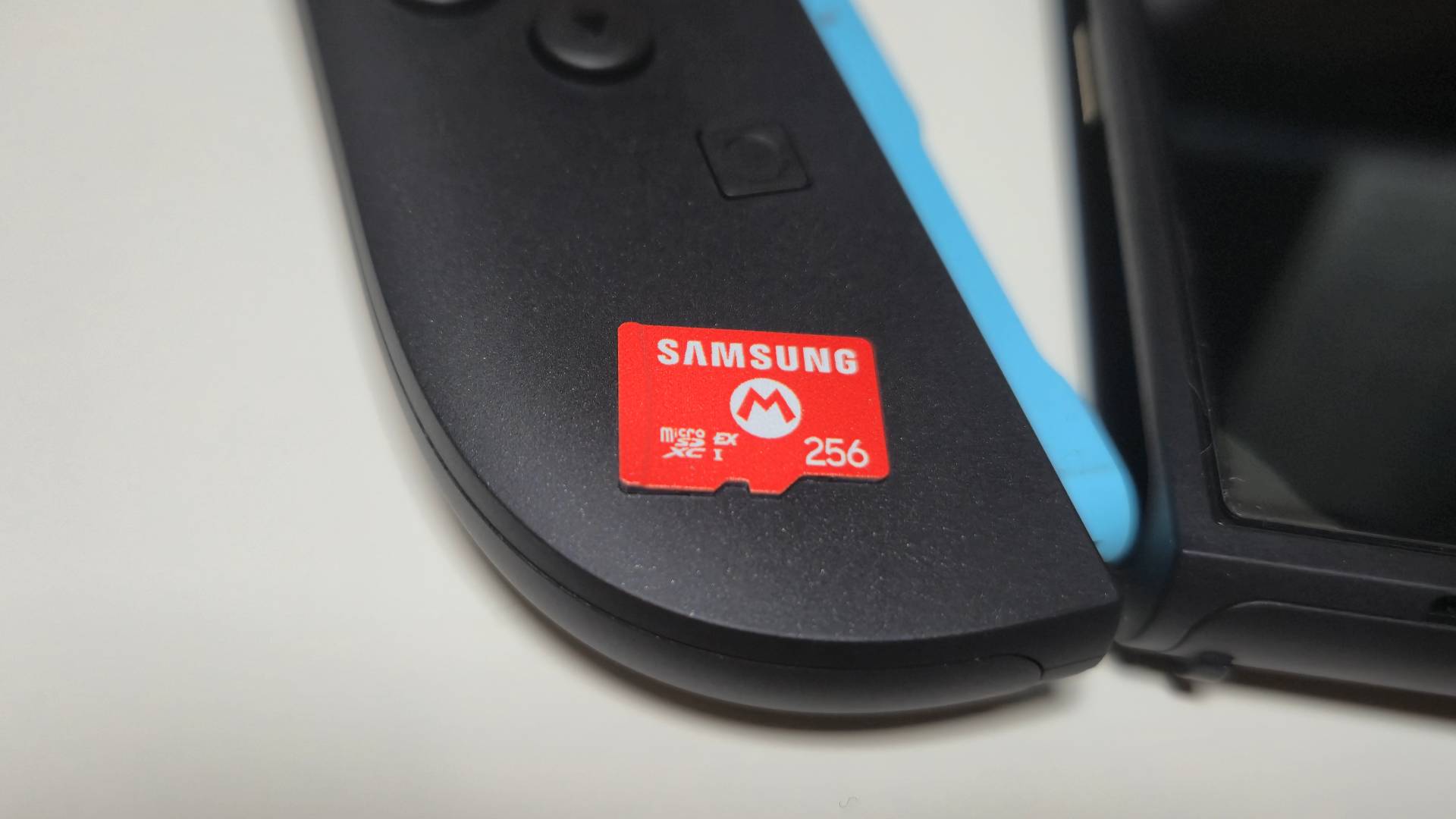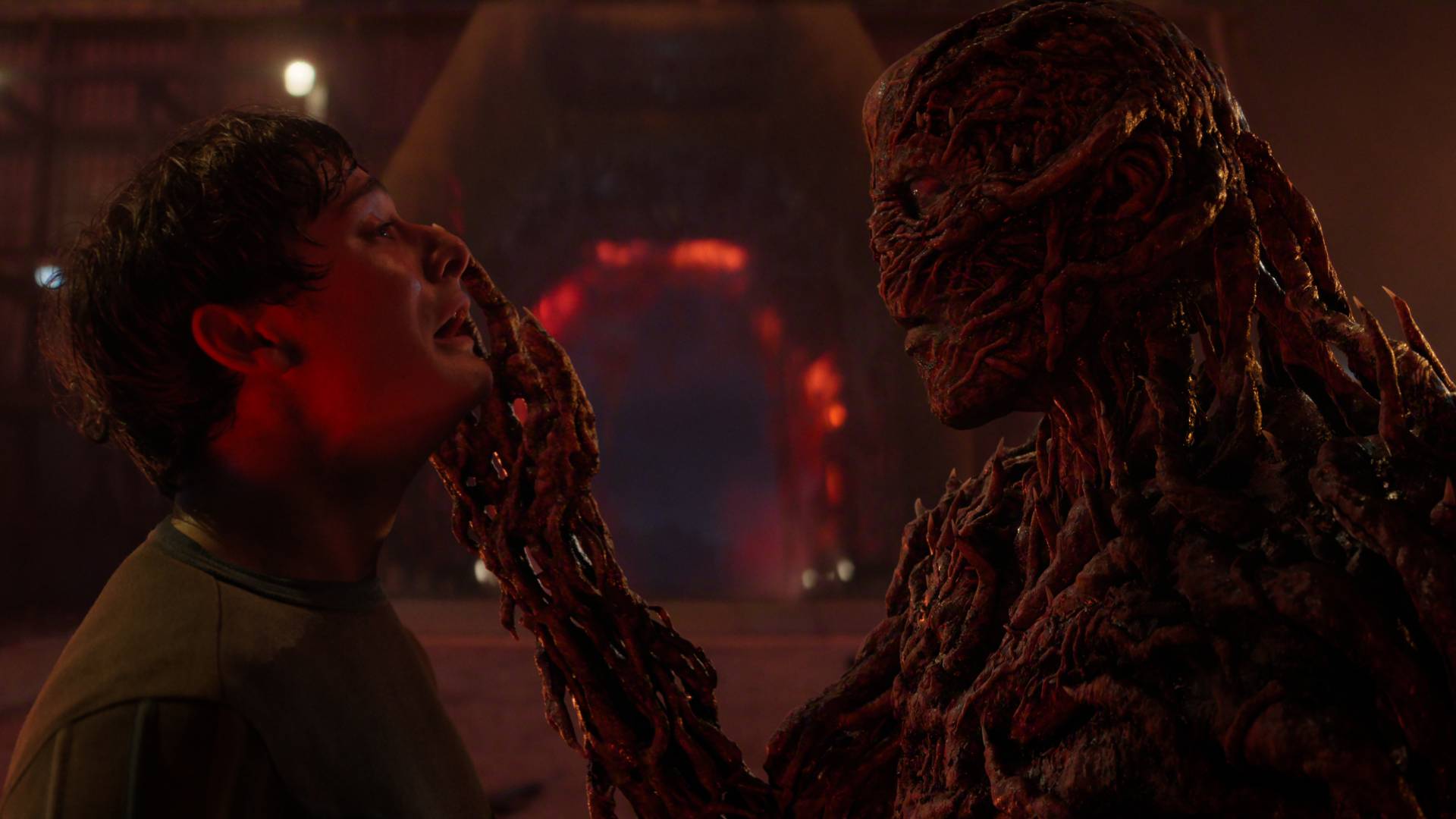GamesRadar+ Verdict
The Samsung 256GB microSD Express card for the Nintendo Switch 2 remains one of the best options for providing extra storage for your new bit of Nintendo tech. It's only available in a 256GB model, so don't expect to get more than up to double that of the onboard storage of your handheld, but its speedy transfer speeds and cute Super Mario branding make it a vital Switch 2 accessory to add to your Switch 2 arsenal until the larger capacity cards get more affordable the further we get into the Ninty's handhelds lifespan.
Pros
- +
Official Switch 2 product
- +
Cute Super Mario branding
- +
Fast transfer speeds
Cons
- -
Limited capacity
Why you can trust GamesRadar+
The best Nintendo Switch 2 microSD Express cards are designed to give your new handheld a storage boost, while providing fast enough speeds to allow you to transfer and run your favorite Switch games without issue - and the Samsung 256GB microSD Express card has done just that for my Ninty adventures since launch day.
It wasn't the first to hit the market, but it was the first of its kind, alongside its SanDisk counterpart, to be officially licensed for the Switch 2. At $59.99 / £49.99, this card remains one of the best for value alone, as it provides super-fast read speeds of up to 800 MB/s and doesn't tack on an extra cost for its cute Super Mario branding.
A quick search of retailers like Amazon will bring up similar capacity 256GB models to this Samsung microSD Express card, which are either the same price, or at least $10-$20 higher, that don't sport the same cute look. So essentially, with the Samsung card, you're getting the reassurance of zero compatibility issues with the Nintendo Switch 2, the lowest MSRP for a 256GB microSD Express card on the market, and a funky Nintendo design as a little bonus.
Key specs
Price | $59.99 / £49.99 |
Capacity | 256GB |
Quoted Read speed | (SD Express) 800 MB/s, (UHS-I) 90 MB/s |
Form factor | microSDXC |
Compatibility | Nintendo Switch 2 & PC. |
Design
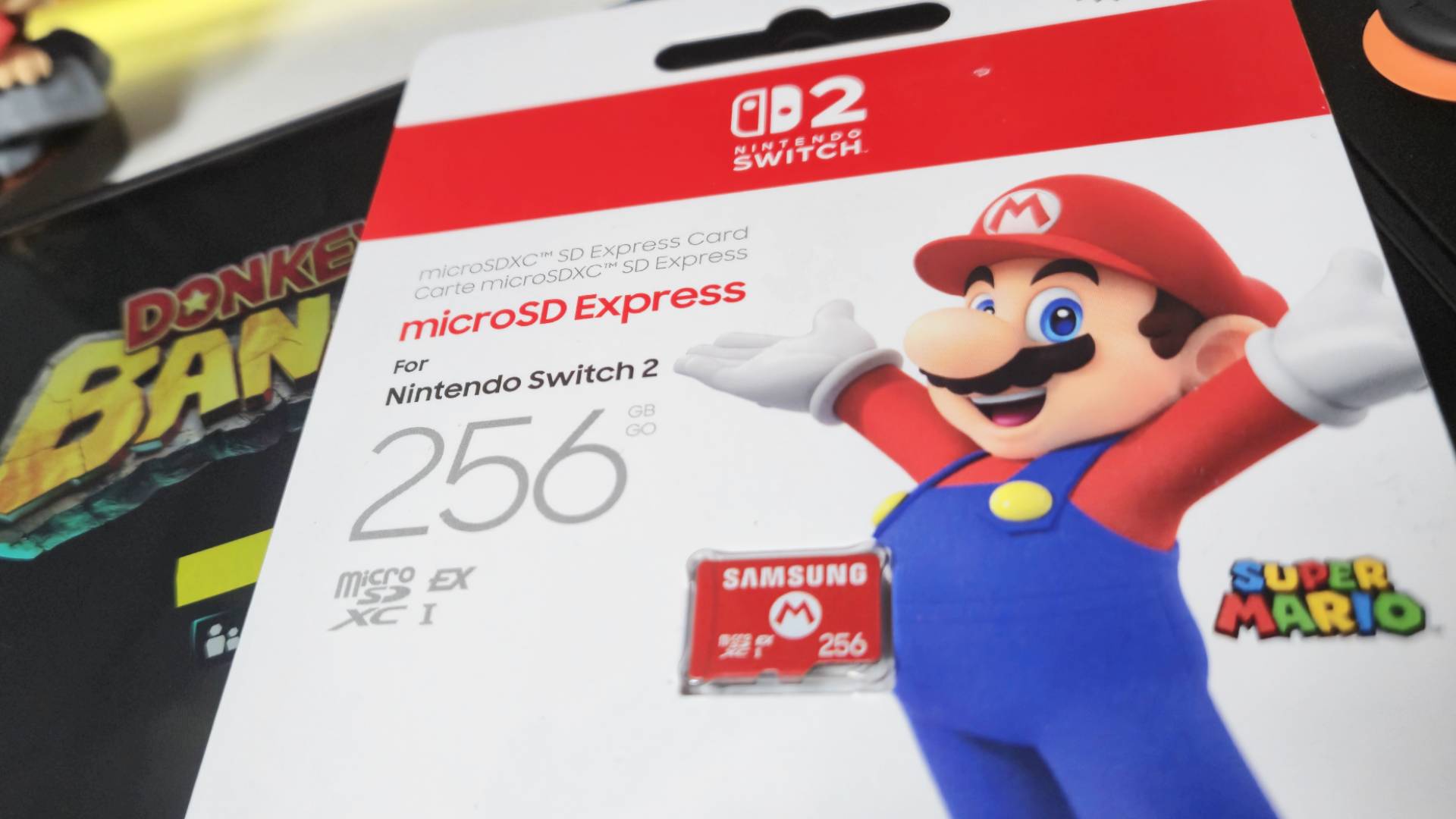
The Samsung 256GB microSD Express Card is the same size and shape as any other MicroSDXC card of its type. However, as an officially licensed card, it's coated in a Super Mario design, featuring a big red M beneath the 'Samsung' labeled branding, and an all-red colorway.
This isn't the first time a Switch SD card has been representative of a big Nintendo franchise. For the last Switch handheld generation, SanDisk launched a variety of officially licensed cards for the older console, including ones dripped out in official Legend of Zelda and Animal Crossing designs. This trend seems to be continuing with the Nintendo Switch 2.
Once you pop the microSD Express card into your Switch 2, you don't ever see the Super Mario branding again, so having any flashy design is a bit silly when you think about it. However, similarly priced 256GB microSD Express cards from brands like Gigastone and Lexar have no branding at all, so it's really jsut a nice little bonus for Super Mario fans.
Features
The Samsung microSD Express Card is just an SD card, so it's not the most feature-full of Nintendo Switch 2 accessories available today. That being said, the card provides 256GB of extra storage, as the name suggests, and is a microSDXC version card, meaning it uses a PCIe 3.1 interface similar to that of the best SSD cards to provide its fast up to 800 MB/s read speeds.
Weekly digests, tales from the communities you love, and more
As per listed amongst the marketing spiel on the official Samsung product page for the card, this Switch 2 accessory is equipped with water, temperature, X-ray, magnet, drop, and wearout-proof protection, to help keep it going strong against general wear and tear. That shouldn't really be an issue once it's popped into the SD card reader hidden under your new Switch 2 kickstand, but it's reassuring that the card should be able to last the many years you spend with your new Ninty console.
Performance
I received the Samsung 256GB microSD Express card shortly after launch, which was a relief as the 256GB onboard storage of the Switch 2 is not enough for my screenshot-loving ways.
Popping the card into the new SD card slot hidden under the upgraded kick stand on the Nintendo Switch 2 was easily done, and after a restart, I was able to start storing games, and as many screenshots and video clips as my heart desires onto the extra 256GB worth of space.
To put the new card through its paces, I timed how long it took to transfer large game files onto the card. The 21.9GB Mario Kart World took 5 minutes and 15 seconds to transfer to the system memory from the card. Additionally, moving the smaller 7.3GB Super Mario Party Jamboree Switch 2 Edition took only 1 minute 44 seconds, which was pretty much to be expected for a less storage-demanding game.
When it came to loading times, Mario Kart World took an average 22 seconds to load to the title screen from the card, compared to the 17 seconds it took when loading from the handheld itself. It was technically faster to run the game straight from the handheld, but a few seconds' difference is not going to be that noticeable, no matter if you're playing in docked mode or on the go.
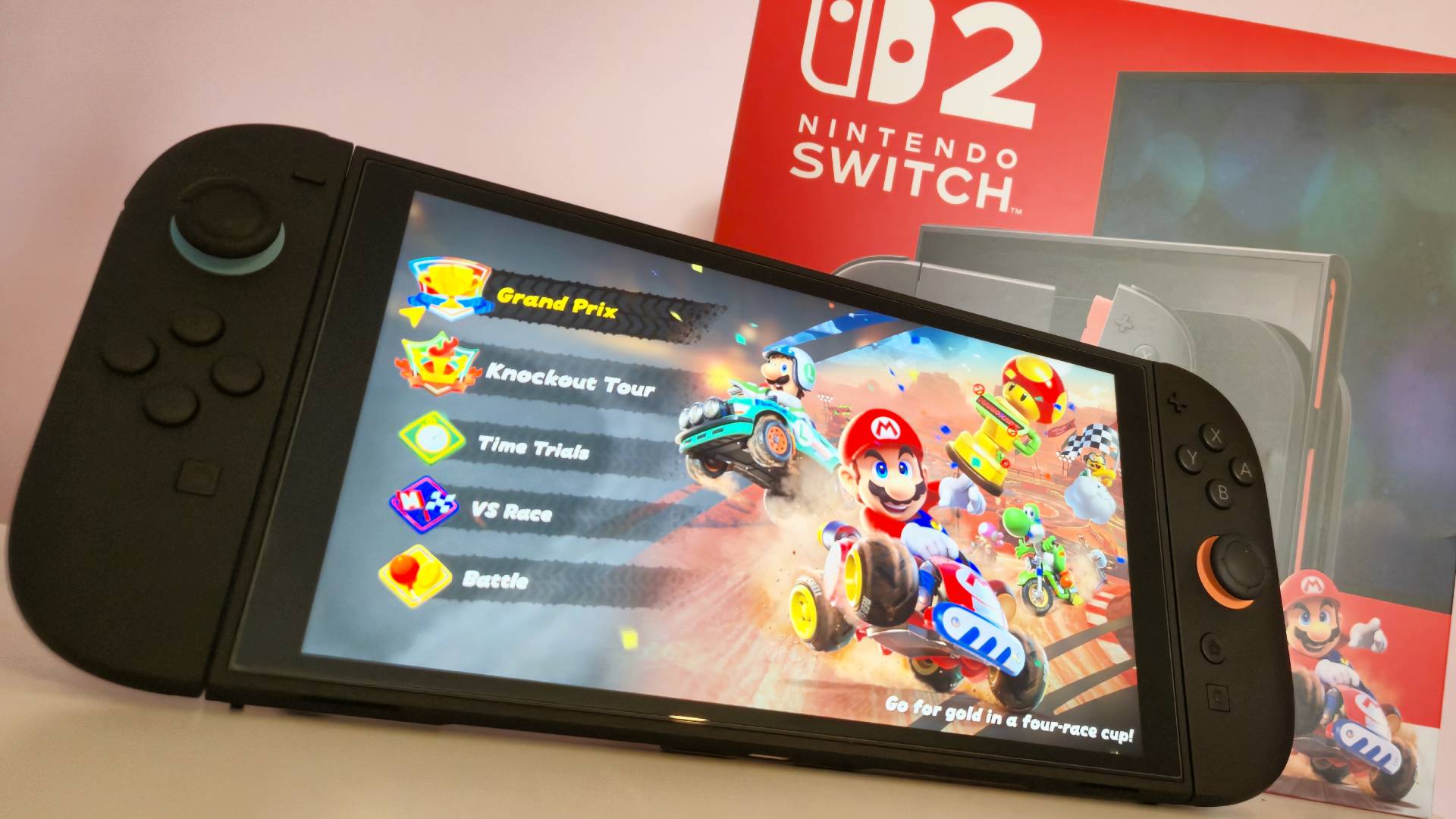
If you're seriously concerned about speeds, grabbing the official SanDisk 256GB microSD Express Card might be a better fit, as it has read speeds of up to 880 MB/s compared to this card's 800 MB/s, however, I haven't been able to take it for a test run yet to see how it stacks up quite yet. While having the fastest transfer and running speeds is important, the focus of this Samsung card is likely going to be all about value for money, as you're getting 256GB of extra space for $59.99 / £49.99, while cards from other brands can be pricier for the same amount of additional storage.
Unfortunately, this card is only available with a 256GB capacity, so if you're keen to have that Super Mario branding but need more than double the storage of the handheld, you're out of luck. The same is the case for the SanDisk version of this card, however, SanDisk also has unofficial variants of its microSD Express card available that ditch the red look, including a smaller 128GB model.
Should you buy the Samsung 256GB microSD Express Card for Nintendo Switch 2?
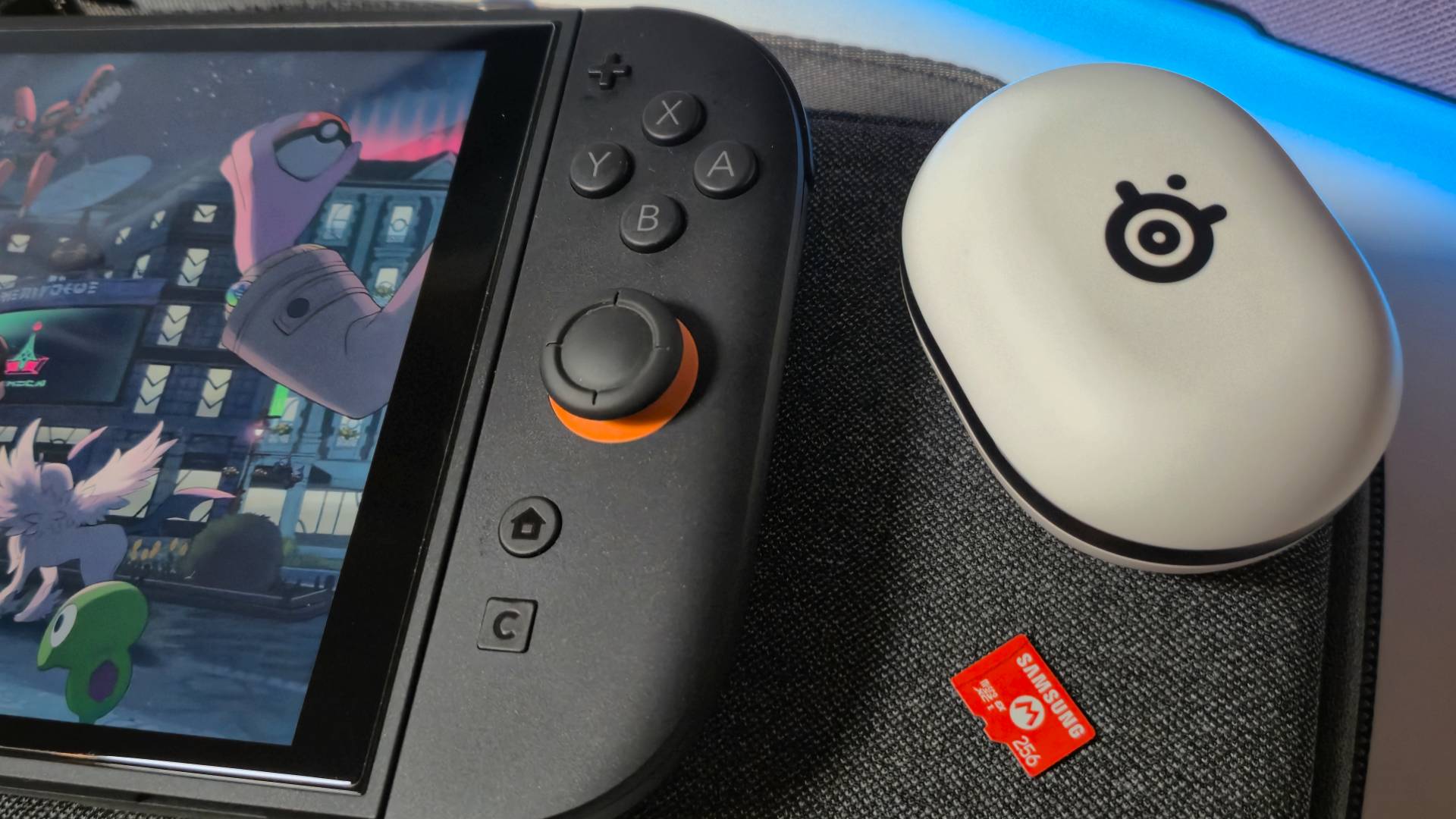
This $59.99 / £49.99 microSD Express card is a good place to start if you're after some extra space for your Switch games, and can't fork out the extortionate $200+ cost for a 1TB alternative.
The Switch 2 relies on microSD Express cards as they provide the fast read and write speeds required to run games, so you're going to need one of any size eventually if you run out of space, or want to futureproof your new handheld. Sure, there are 128GB versions available on the market right now, but they don't provide the same value as this Samsung card, for the cost, nor are they officially licensed and decked out in a flashy Super Mario design.
If you're going to start anywhere and want the best low-cost card possible, I'd stick with this Samsung option. With an extra 256GB you're essentially doubling up your available space, which will come in handy once more Switch 2 games start to launch. So far, titles like Pokemon Legends Z-A have reasonable storage sizes of just 4.1GB, but Kirby Air Riders is set to have 25GB when it launches on November 20, and new games are likely only going to get more storage-demanding from there on out.
The SanDisk counterpart of this card provides slightly faster read speeds of up to 880 MB/s and write speeds of up to 650 MB/s, but the difference won't be very noticeable to the average Ninty fan. Both cards are so similar that either will help give your handheld a well-needed storage boost for all your Switch game and screen capture needs.
How I tested the Samsung 256GB microSD Express Card for Nintendo Switch 2
I tested the Samsung 256GB microSD Express card by adding it to my Nintendo Switch 2 handheld, and using it as my main card for months after launch. During this time, I used it to store a wide range of old and new Switch games, predominantly the digital version of Mario Kart World that came included with my Switch 2. When not storing and running games, I used the microSD Express card to store screenshots and game clips from games like Donkey Kong Bananza, Super Mario Galaxy, and Pokemon Legends Z-A. For more information on how we test Nintendo Switch 2 microSD Express cards and storage, please read our full GamesRadar+ Hardware Policy.
New to Switch 2? Check out our Nintendo Switch 2 kit guide, which is full of the best Nintendo Switch controllers and the best Nintendo Switch headsets that we recommend to start you off on your new Ninty gaming journey.

Ever since I first held a NES controller in my hand I've been obsessed with gaming, and the hardware it runs on. I could hook up a NES and SNES to a telly, without instructions, before I could walk. Even now, nothing is more exciting then taking a console, or handheld, out the box for the first time and setting it up. This obsession transformed into a love of games and game music, which lead to my music degree and dream of becoming the Scottish Nobuo Uematsu. After sharing my love of games through music, I began to share my love through words on sites like TechRadar and iMore. This lead to becoming a Hardware staff writer for PCGamesN, and later the Senior Tech Writer for Dexerto, covering all things Steam Deck, PlayStation and Nintendo. With that experience, I was able to level up as Hardware Editor for GamesRadar+, where I'm still just as Nintendo, PlayStation and gaming tech obsessed as ever.
You must confirm your public display name before commenting
Please logout and then login again, you will then be prompted to enter your display name.
